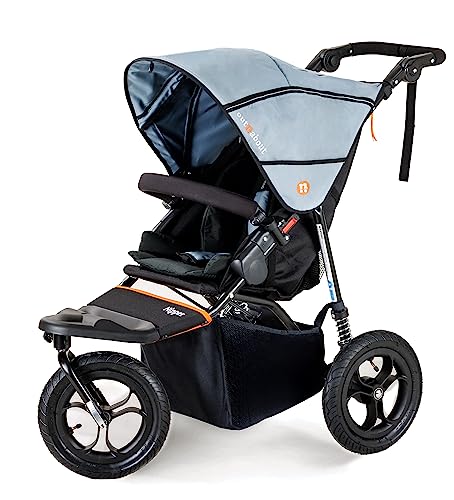How To Create An Awesome Instagram Video About Pushchair And Pram
페이지 정보

본문
Understanding Pushchairs and Prams: A Comprehensive Guide
When it pertains to baby mobility, the terms "pushchair" and "twin pram" are frequently utilized interchangeably. However, they represent distinct kinds of baby providers, each crafted for particular stages of a child's development and varied parental needs. This short article explores the vital distinctions between pushchairs and prams, their features, types, and factors to consider for new parents.
What is a Pushchair?
A pushchair, typically called a stroller in some regions, is created for children who can stay up independently. Normally, pushchairs are modern, lightweight, and have a seat that can be reclined for added convenience. They might also feature a five-point harness to ensure the kid's security while on the go.

Key Features of Pushchairs
- Light-weight Design: Most pushchairs are made from lighter products, making them simple to maneuver and carry.
- Adjustable Seats: Many models use recline options, catering to resting or active positions.
- Canopy: Most pushchairs come geared up with a sunshade or canopy to secure the kid from sun exposure.
- Storage Space: They typically include a lower storage basket, best for holding diaper bags or shopping.
Common Types of Pushchairs
- Standard Pushchairs: Traditional alternatives ideal for children who can sit independently.
- Umbrella Strollers: Lightweight, compact, and easy to fold; ideal for taking a trip.
- All-Terrain Strollers: Built with larger wheels for off-road capabilities and smooth trips on diverse surface areas.
- Travel Systems: Combines a stroller and an infant automobile seat, permitting parents to move their child perfectly.
What is a Pram?
A pram, short for "perambulator," is mostly developed for babies, usually from birth till approximately 6 months. Prams are structured with a flat lying position that supports a newborn's anatomy, guaranteeing they are nestled effectively.
Secret Features of Prams
- Flat Bed Design: Prams have a totally flat bed, which is necessary for young babies who require to lie flat for comfort and health.
- Stylish Aesthetics: Many prams boast vintage or classic designs, frequently seen with glamorous fabrics and attractive surfaces.
- Suspension System: Quality good Prams often include a suspension system to offer a smoother ride over rough terrain.
- Extended Canopy: Extended sun security and rain covers are typical.
Common Types of Prams
- Traditional Prams: Featuring a conventional design, these are frequently styled to stimulate fond memories.
- Convertible Prams: These can quickly change from a pram to a double pushchair and typically grow with the kid.
- Light-weight Prams: More compact than standard prams, making them simpler to transport.
Distinctions Between Pushchairs and Prams
| Function | Pushchair | Pram |
|---|---|---|
| Usage Case | For kids who can stay up | For newborns and babies |
| Style | Upright seat with reclining option | Flat bed for resting |
| Weight | Normally lighter | Heavier due to durable building and construction |
| Density | Folds easily and compactly | May be bulkier, depending on design |
| Age Range | 6 months to 4 years or older | Birth to approximately 6 months |
| Rate Range | More cost effective choices readily available | Often more costly due to products and style |
Choosing Between a Pushchair and Pram
When selecting in between a pushchair and a pram, numerous aspects require factor to consider:
- Age of the Child: Newborns need a pram; older babies and young children will be more comfortable in a pushchair.
- Lifestyle Needs: Parents who travel frequently might choose lightweight pushchairs, while those trying to find comfort in style might lean toward prams.
- Budget: Prams can vary from moderately to expensive; trustworthy pushchairs can accommodate budget-conscious shoppers.
- Storage Space: Consider how easily the chosen design can fit in your cars and truck trunk or home storage.
FAQs
Q1: Can I utilize a pushchair for a newborn baby?
While particular pushchairs are developed with reclining features that may accommodate infants, it is typically suggested to use a pram or specially designed baby cars and truck seat for newborns.
Q2: Are travel systems worth the financial investment?
Travel systems can offer benefit by integrating a safety seat and a stroller. They allow for smooth transition from cars and truck to stroller, which many parents find important.
Q3: How do I keep my pushchair or pram?
Routinely tidy the material, check for mechanical problems, and lube the wheels. Ensure to follow specific care directions offered by the producer.
Q4: What is the weight limit for pushchairs and prams?
Weight limitations vary by design: usually, pushchairs accommodate as much as 50 pounds, while prams fit babies as much as 30 lbs. Always describe the maker's guidelines.
Q5: Is it vital to have a rain cover for my pushchair or pram?
Yes, a rain cover can protect your kid from rain and wind, preserving comfort while preventing damp clothes.
In summary, pushchairs and prams serve essential however unique functions in the movement landscape for parents and caregivers. Choosing the right design depends upon the child's age, way of life needs, and family choices. By comprehending the qualities, advantages, and differences between pushchairs and prams, moms and dads can make informed decisions that make sure convenience and security for their child. Whether strolling through the park or browsing hectic streets, the ideal mobility solution is out there waiting.
- 이전글60mg Nicotine E-Liquid: Save On 60mg Nic EJuice 25.11.02
- 다음글Residential Boarding Up Tools To Help You Manage Your Everyday Lifethe Only Residential Boarding Up Trick That Everybody Should Be Able To 25.11.02
댓글목록
등록된 댓글이 없습니다.
